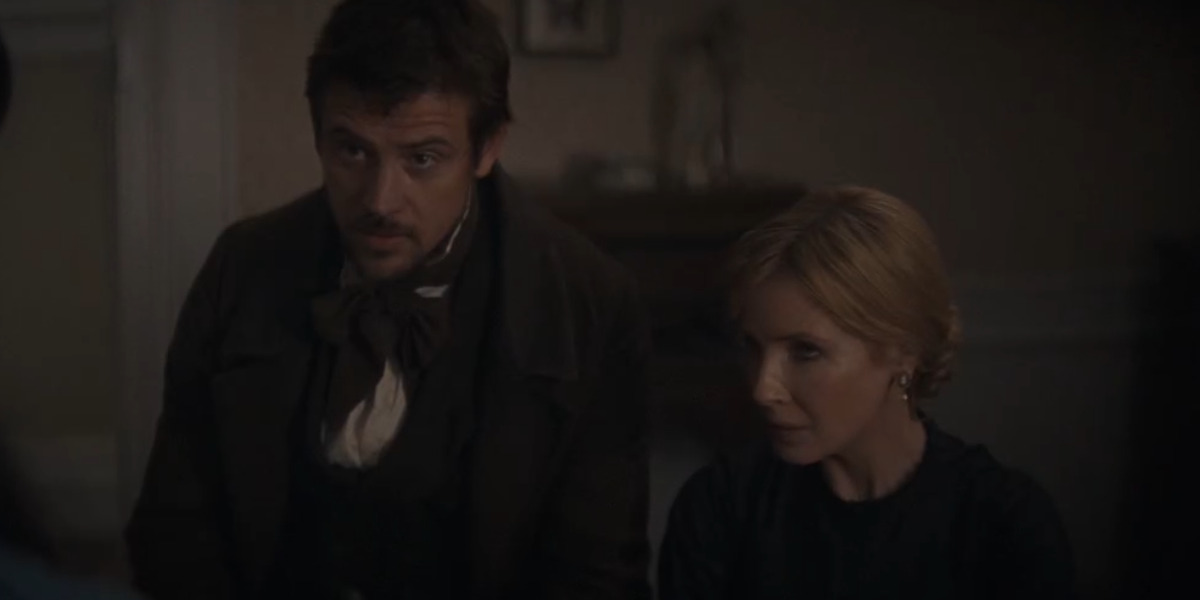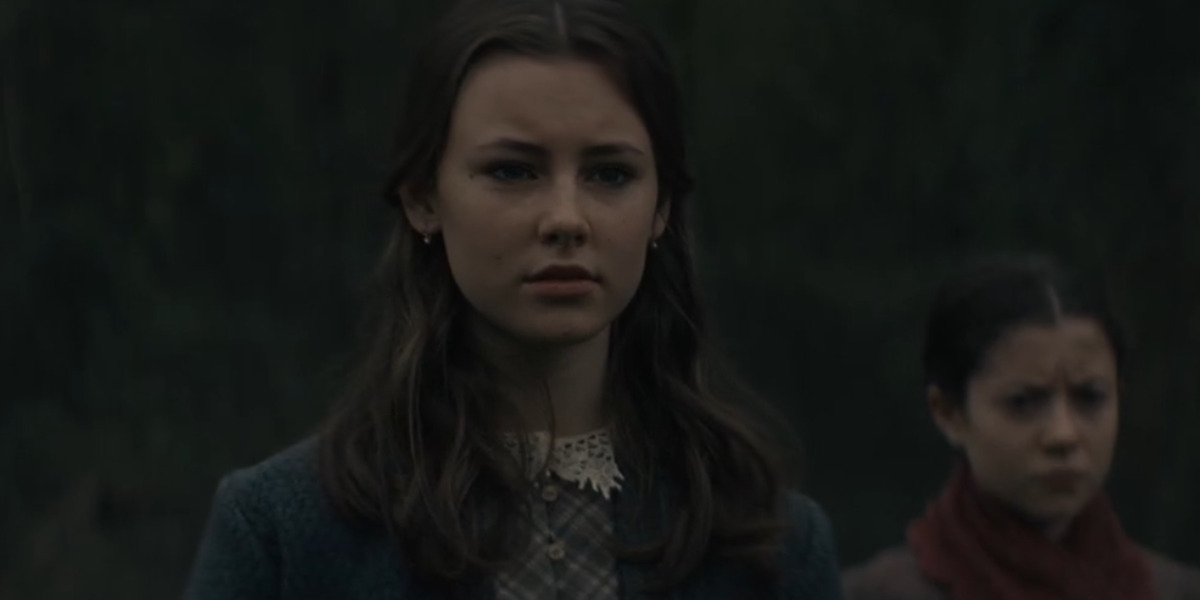Originally titled ‘Eight for Silver,’ ‘The Cursed’ is a gothic horror film directed by Sean Ellis. It transports the viewers to a small, secluded village of the past that has witnessed a great tragedy. Seamus Laurent, a land baron, enters a conflict with a Romani tribe that ends in the ruthless bloodshed of the latter. In the wake of the massacre, a curse is released onto the town that turns living nightmares into reality in the form of a dastardly beast. Fortunately, the fateful arrival of pathologist John McBride becomes a beacon of hope as he takes on the task of hunting the monstrous hunter and freeing Seamus and his village from the menacing curse. The story, with its snowy planes and historical atrocities, offers a grand stage for the tale of the curse to unravel. Naturally, this distinguished setting adds a layer of charm to the period piece, creating intrigue about its origins.
The Cursed Presents the Werewolf Genre in a Unique Light
‘The Cursed’ presents a gripping monster story with a recognizable beast at the narrative’s center. Consequently, while its supernatural elements detach the story from reality, the central antagonist ties it into an overarching genre. Therefore, even though Seamus’ story and its villain hold no direct connections to real life, the tale sustains some intrinsic links to notable additions within the genre. For instance, films like ‘An American Werewolf in London,’ from 1981, and the original ‘The Wolf Man’ were particularly prominent influences for writer and director Sean Ellis. He always had a fascination for the makeup of the special effects of the former film, which was executed to perfection by Rick Baker. Similarly, the 1941 film influenced the filmmaker’s writing on his own project.

‘The Wolf Man’ has long been interpreted as a metaphor for religion-based prosecution, particularly of the Jewish people in late 1930s Europe. Therefore, with that in mind, Ellis was eager to create a similar center of tension for his werewolf film. While thinking of a modern-day equivalent to the narrative conflict, the filmmaker began thinking about the concept of addiction, which plagues the contemporary world in one way or another. In a conversation with Nightmare on Film Street, he shared, “(I started to think) How we’re either addicted to drugs or addicted to our phones, in some way or another we’re always addicted to something and so I started to think of the wolf as a metaphor for addiction and how you become a prisoner to that addiction.”
From there, the film started to take shape. It utilized familiar conventions of the werewolf genre, employing tropes of the bite, a first victim, as well as the creature’s famed weakness to silver bullets. However, he modified all these elements to fit into the mythology of ‘The Cursed.’ Thus, lore is added to the history behind the silver bullets, providing a biblical facet to the story. Moreover, the film also employs its historical setting to inform the foundation of the tale. Even so, while the period setting plays a role in informing the worldbuilding, it doesn’t necessarily inspire direct narrative counterparts. As such, the characters and their narratives remain a work of fiction.
The Cursed’s 19th-century Century Setting in France Informs Parts of Its Narrative
‘The Cursed’ takes place in the late 19th century, in 1881, to be exact. The film opens with a glimpse into the battle-bruised trenches of Somme during the Great War. Afterward, the rest of the story unravels in a flashback to 35 years in the past. Although the story never explicitly identifies the central town, its location can be traced to somewhere in rural France. The land baron of the residential settlement, Seamus Laurent, is in conflict with the Romani tribe, which resides on the same land. Even though the latter has a claim to the land that precedes Seamus’ arrival by decades, he refuses to surrender it to the clan. Instead, he and his superiors decide to wage war against the Roma people, ruthlessly massacring their community and taking the land for themselves as war spoils. However, the tribe’s elder plans a plot for revenge against her enemies’ brutal violence and desecration of the dead.

Thus, the titular curse of the wolf and silver comes into play. Even though this confrontation between Seamus and the Roma people isn’t based on any specific historical event or individual, it retains roots in reality. In the 19th century, the Romani people were under great scrutiny from European authorities. This resulted in large-scale extermination and deportation of the nomadic community. France, among multiple other countries, remained hostile toward the population at the time. In fact, in the early 1900s, by the time of World War II, French “Nomads” were put under house arrest and sent off to German camps. Consequently, the idea of a horror similar to the one that befalls the Romani clan in the film isn’t outside the boundaries of reality. For the same reason, the film’s period setting in France becomes essential to storytelling, adding a note of realism within the otherwise supernaturally charged story.
Furthermore, the historical tale of the Beast of Gévaudan also informs the geographical setting of the tale. ‘The Cursed’ equips the attack on the province of Gévaudan (parts of modern-day Lozère and Haute-Loire) as backstory for the central curse and the character of John McBride. The attacks, said to have been carried out by a man-eating animal(s), have been employed by werewolf media on multiple occasions. The most notable examples are the video game ‘Chronicles of the Wolf’ and the TV show ‘Teen Wolf.’ As a result, the film’s setting in France offers a link between the on-screen narrative and the historical event. However, the inclusion of the Beast of Gévaudan notably creates some friction in the film’s timeline. The attacks are said to have taken place in the 1760s. Consequently, given the evident setting of ‘The Cursed’ in the late 1800s, it’s safe to assume the on-screen tale simply shifts around the timeline for the real-life historical event.
Read More: Is Lifetime’s The Wife Who Knew Too Much Based on a True Story?


